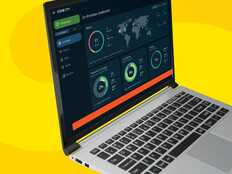Transportation Department Paves Road for Future Data
Maria Roat, the U.S. Department of Transportation’s Chief Technology Officer since August, is currently looking at how the department’s data is being collected, protected, utilized and stored.
The data inventory is part of a two-year plan to overhaul how USDOT governs its data, with the aim of harnessing the data in ways that are most useful to the department and the public. Equally important is figuring out what data is not necessary.
“This has been an enlightening process,” Roat said Thursday at the Federal Cloud Computing Summit in Washington, D.C. “We constantly get batches and batches of data from a wide variety of sources that is only going to continue to grow. Our key is finding out how to manage all of this so we can most benefit from it.”
Roat came to USDOT from the General Services Administration, where she led the Federal Risk and Authorization Management Program that is providing a standardized approach to cloud computing for government.
It’s little surprise then that Roat is turning to the cloud as she develops USDOT’s data strategy. She is working on a cloud computing strategic plan – as well as one for geospatial data – that looks closely at the department’s enterprise architecture to determine what parts of the infrastructure and what applications can work in the cloud.
“We’re really looking at long-term planning around cloud to see what can be consolidated, but consolidated smartly,” Roat said. “We see cloud as this great enabler. What if in five years technology has advanced where storage is no longer an issue? What will you do then? That’s how we want to think.” Roat said the department is undertaking a handful of data-centric projects that take advantage of the increased capacity and scalability that cloud allows.
Take the data behind addresses, which is dispersed throughout the federal government without a true owner, she said, citing the Census Bureau and the U.S. Postal Service as examples. Other agencies use it as well, but she said USDOT sees potential in this data being used for other purposes such as emergency response.
Another project centers on inspection information conducted by many federal agencies, which could be collected and organized in a way that researchers could turn into valuable tools for both the government and the public.
Such projects are in addition to data-specific projects within USDOT. Roat said that as vehicles begin collecting more data, especially ones with computer-automated driving abilities, the amount of data will continue to explode. She said one of the keys will be to find the sweet spot of collecting enough data — not too much and not too little.
“If a driver hits their breaks and the car records that, well, that’s not data we essentially need to keep forever,” Roat said. “We want to make sure the data we collect has purpose and is something that the academic, research and development community can navigate, because without that then it quickly loses value.”









